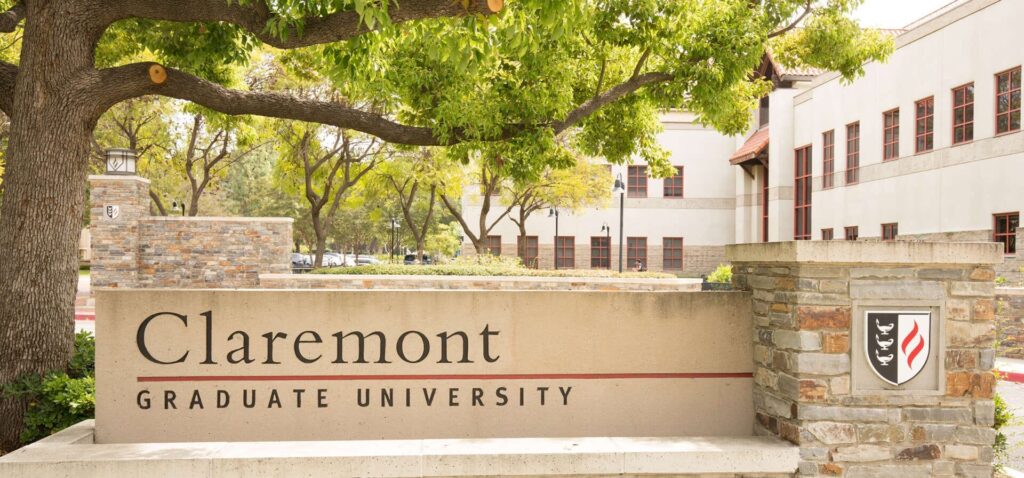Local cities take steps to save Ontario Aiport
The city of Claremont is stepping in to help Ontario regain control of the Ontario Airport.
Ontario began a public relations campaign last week asking for other cities across the region to help aid in their fight to acquire the airport from the Los Angeles World Airports, L.A.’s aero department that also operates the Los Angeles International Airport (LAX) and Van Nuys Airport.
Claremont, Pomona and Montclair are among those who have already voiced support for the acquisition. Contributing to the fight will help keep a vital resource for the city of Claremont, said Claremont Mayor Sam Pedroza.
“Though we are helping Ontario, we are also directly supporting the interests of our city. We are supporting a regional resource that happens to be in the city of Ontario,” said Mr. Pedroza.
At the next council meeting on Tuesday, February 14, the Claremont City Council will vote to adopt a resolution for local control in an effort to help garner support for Ontario and encourage other local officials to become more aware of the impact.
“I think this goes beyond just being a neighboring city. Ontario Airport services our entire region. It has a huge economic impact to the city of Claremont,” said Claremont City Manager Tony Ramos. “A lot of our businesses probably receive services through the Ontario Airport. It’s just a strong economic engine that we can’t afford to lose in this region.”
For more than 2 years, a battle has been waging between Ontario and LAWA, which currently operates the local international airport. Ontario representatives fear that the steadily increasing prices to fly out of Ontario—for airlines and passengers—will continue to contribute to the airport’s decline, leading to its eventual closure.
“This is a serious issue and people have good reason to be angry,” said Ontario City Manager Chris Hughes. “The airport’s downward spiral will hurt our city’s businesses, hotels, and the businesses and hotels in other cities too. And Claremont understands that.”
Ontario’s frustration builds upon a struggle that has been mounting for years. The airport was first bought from the city of Ontario by LAWA in 1967. LAWA reports an estimated $560 million in investments to improve the airport as it grew in the decades following.
Due in part to the struggling economy, Ontario Airport has begun to see a sharp decline in airline carriers and travelers over the past several years. Numbers peaked in 2007 with an estimated 7.2 million annual visitors, according to reports. 2011 reported about 4.5 million, a loss of nearly 270,000. Ontario officials allege mismanagement from LAWA representatives as a key element of the growing problem.
“We feel that LAWA has not done enough to market and make this airport so it can compete with mid-sized secondary airports in the region,” said Mr. Hughes, adding: “It is more expensive for the airlines to fly out of Ontario than LAX. There is no other place in this country where a secondary airport is more expensive. We see a conflict of interest here.”
Ontario has asked LAWA to relinquish control of the airport at the “foreclosure price” of $50 million, but to date, department executives hold firm to its decision that the airport is not for sale.
“Now that LAWA has done the work, has invested significant time and money, the city of Ontario wants the City of Los Angeles to give the airport back to them for $50 million, a price that doesn’t come close to either the value of the airport today or the value of the significant investment the city of L.A. has dedicated to [Ontario],” said LAWA Executive Director Gina Marie Lindsey in a recent statement. “The operating costs of [Ontario] do not come at taxpayer expense. Ontario Airport is self-supporting and LAWA intends to hold onto this important City of Los Angeles asset.”
Despite LAWA’s refusal, Ontario’s desperation has led officials to turn toward cities within their region with its “Set Ontario Free Campaign,” geared toward educating the public about their concerns and encouraging others to share their support with local and federal policymakers.
“We are bleeding 1.3 million passengers going into LAX that shouldn’t be. It is inconvenient for our business owners, residents, and family members. That is not the way an airport is set up to function,” Mr. Hughes said. “This issue might not be important to L.A., but it is important to this region and southern California.”
Ontario officials have been busy meeting with representatives of cities across the region and presenting video presentations and Q&A sessions on their struggle. It was at one such presentation held in conjunction with a Claremont Chamber of Commerce’s meeting last month that initially got Claremont’s attention, according to city officials.
Ontario’s quest for local control is in alignment with Claremont’s goals and interests, said Mr. Pedroza.
“When a [local business or entity] is managed and made up of local people, there is a better understanding of what local needs and benefits are,” he said.
The city of Claremont has been enthusiastic with their support, according to Mr. Hughes. He met with Mr. Ramos and city representatives once again last week to answer questions and propose a resolution of support for Ontario regaining control of its airport.
As council members prepare to vote on the resolution at the next council meeting, Claremont officials are encouraging residents, business owners, and members of the Claremont Colleges to contact their state and federal legislators to express their support for giving local control to Ontario.
“The LAWA folks need to see exactly what gaining control of this airport means to the people out here,” Mr. Pedroza said. “It is important for them to hear the voices of the larger sector. This is going to affect all of us.”
For information on Ontario’s campaign for control, visit www.setontariofree.com.
—Beth Hartnett










0 Comments